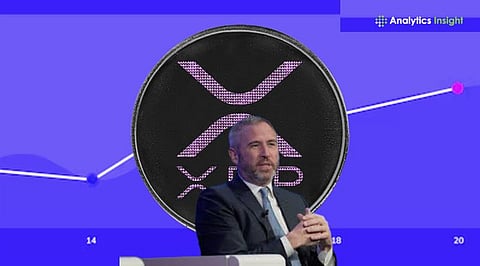

At the Swell 2025 conference, Ripple CEO Brad Garlinghouse addressed the rising political divide surrounding cryptocurrency regulation. According to Binance News, he warned that growing partisanship in the U.S. could slow innovation across the digital asset sector. Garlinghouse said that technology should not become a political football and must instead be viewed through a neutral, results-based lens.
He explained that many Democratic leaders now recognize the importance of separating politics from technology. Garlinghouse added that regulatory decisions should focus on clear outcomes rather than partisan agendas. “Technology should not be politicized,” he stated, calling for a shift toward frameworks that support financial inclusion, transparency, and market stability.
Garlinghouse urged the regulators to ask, "What outcomes do we want to get?" instead of arguing about political positions. He spoke out for regulation that was joint and practical and that would support innovation rather than obstructing it.
Garlinghouse warned that if the regulation of cryptocurrencies was a matter of politics, it could result in what he called a “cliff” - a sudden drop in the progress of legislation. Whenever regulations turn into a battlefield of opposing parties, he went on, the regulators risk leaving the industry without any guidance or stable rules.
The Ripple CEO pointed out that the acknowledgment of technology's significance being bipartisan is increasing. The majority of the leaders at present are of a unified view that the U.S. must be the leader in the global tech race and that innovation must be allowed to vent politically. His observations came amid the plight of high regulatory uncertainty, which continues to hover over the crypto market, especially for businesses that are doing cross-border payments, hence seeking clarity.
He argued that for regulations to work, it is essential that there be cooperation and a common commitment to get practical results as the building blocks. In fact, Garlinghouse pointed out the synchronization of technology policy with objectives such as responsible innovation and fast payments would create benefits for both the public and the industry.
Ripple's continuous promotion of clear, outcome-driven policies that support development without imposing unnecessary barriers was strengthened by the Swell 2025 address.
XRP, in the meantime, showed strong market momentum. The token, according to CoinMarketCap, increased to $2.29, which is a rise of 2.69% in the last 24 hours. Its market capitalization went up to $138.01 billion, thereby consolidating its position in the group of top digital assets.
The trading volume for the same time frame was $5.98 billion, reflecting a 3.72% decline as compared to the preceding day. The volume-to-market cap ratio was 4.27%, indicating that trading activity across exchanges has been steady but limited. The number of XRP holders presently stands at 487,090, which is a sign of the continued interest of the investors.
The circulating supply is noted to be 60.1 billion XRP, out of a total of 99.98 billion and a maximum of 100 billion XRP. Even though there were minor pullbacks, XRP’s 24-hour chart showed a stable upward trend, thus indicating strong liquidity along with investor confidence.
The question that now arises is whether the regulators will be able to do away with partisanship in order to realize the full potential of the digital finance area, just as the asset keeps on growing and Ripple's management keeps on calling for unified regulation.
Brad Garlinghouse’s address at Swell 2025 encouraged the regulators not to stay stuck in the political divides but to put the real-world results first in the crypto policy-making process. His proposal for a balanced approach to regulation that would yield cooperation as the basis for sustaining digital finance innovation comes as XRP enjoys a trend that keeps it above $2.29.
Read More: XRP Price Prediction: Where Could it Be in the Next 13 Years?
